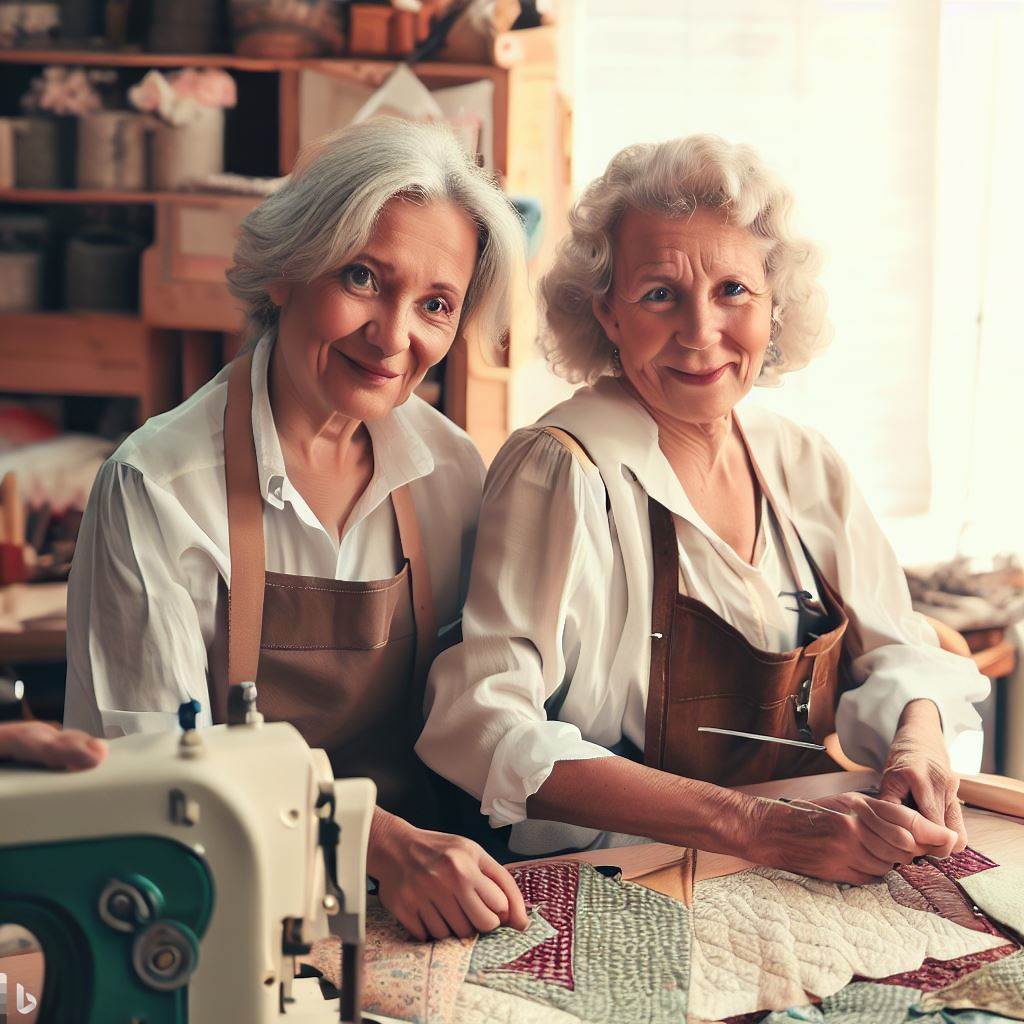The Craftsmanship of Quilting: Celebrating the Hands Behind the Art
From precision cutting to intricate stitching, quilting demands exceptional handcrafting skill at every step. A stunning quilt relies on the practitioner’s dexterity, patience, and care transforming practical materials into art. The many hours of hands-on labor becomes obscured within the final composition. Thus to fully appreciate a quilt is to recognize the gifted hands responsible for its creation.
Developing the Fundamental Skills of the Craft
Just like painters must learn brush techniques or sculptors must master clay, quilters needs hands-on practice across core techniques to build fluency in their medium. Mastering the craft requires commitment to fundamental skills.
Cutting: The Importance of Accuracy
Careful cutting sets the stage for the entire piecing process. Using rotary cutters and rulers, quilters must slice fabric into uniform squares, triangles, or strips with perfectly straight edges. Attention to detail prevents uneven sections or distortion once pieces are joined. Sharp blades, steady hands, and measured cutting empower precise designs.
Piecing: Meticulous Seamwork
Piecing quilting components likepatches or blocks demands meticulous seamstress work. Aligning corners perfectly, quilters press and pin fabric pieces then sew scant 1⁄4 inch seams. Keeping “seam allowances” small prevents bulk but requires hand coordination. Seams must be sewn straight and consistent to help blocks lie flat and assemble into flawless patterns.
Pressing: Creating Flat Seams
Between steps, pressing seams flat with an iron keeps fabric smooth and even. The simple act of pressing prevents distortion while setting seams and helping pieces align properly. Well-pressed seams enhance precision. Knowing when and how to press seam allowances or entire blocks makes for distortion-free construction. Consistent pressing habits lead to crisp results.
Skill Mastery Through Repetition
Like any handcraft, mastery emerges through repetition. Making different quilt blocks in multiples reinforces muscle memory for techniques. What may feel painstakingly difficult at first gradually improves through practice. Quilters’ hands gain intelligence over time, translating careful effort into grace and efficiency.
Layering, Quilting, and Finishing Touches
Once pieced tops are complete, the quilting phase calls for equal parts technical skill and artistry to transform fabric into a finished quilt.
Creating Dimension Through Layering
After the pieced top is pressed, it gets layered with batting and a backing fabric. Keeping these layers perfectly aligned and flat requires careful smoothing by hand. Wrinkles or bubbles compromise the quilt’s structured finish. Proper pinning or basting holds the “quilt sandwich” together in preparation for stitching.
Hand Quilting: Precision and Perseverance
Hand quilting each layer together takes tremendous dexterity and stamina. Using tiny straight stitches, quilters work across the entire surface to attach the layers without bunching fabric. Equal stitch spacing lends consistency. Maintaining small precise stitches while pushing and pulling fabric takes focused hand strength and resilience. This meditative process creates coveted texture.
Free Motion Quilting: Mastering the Machine
Using a sewing machine, free motion quilting requires fluid hand-eye-machine coordination. As the machine rapidly stitches decorative designs, quilters maneuver the fabric with both hands. Detailed motifs demand constant adjustments to create symmetry and consistency stitch by stitch. Practice allows quilters to work intuitively through their machines.
Binding: Framing the Masterpiece
Binding finishes quilt edges neatly while hiding inside seams. Accurately cut bias binding gets attached by hand or machine all around the edges. Folding corners into perfect ninety degree angles and miters without gaping takes finesse. Finally, binding gets hand stitched neatly into place on the quilt back. Binding’s meticulousness frames the quilter’s efforts elegantly.
Revealing the Maker’s Mark: Signs of Craftsmanship
Beyond the overt beauty of patterns and colors, examining a quilt closer reveals the subtler signatures of its maker’s skillful hands. These intimate details separate handcrafted artistry from mass production.
Consistent Stitch Quality
In both piecing and quilting, the tiny stitches should appear uniform without looseness or bunching of fabric. Even tension and stitch length reflect the quilter’s control and rhythm. These signs of quality emerge from accomplished hands.
Alignment and Precision
Perfect pattern alignment, sharp points, and accuracy of shapes like circles or curves display a quilter’s cutting aptitude. Fabric edges should align without gaps or overlap. Symmetry and consistency also emerge from precise hands.
Flow and Proportion
A keen eye guides graceful composition. Finished blocks or quilt sections appear balanced and harmonious thanks to the maker’s sense of layout. Hand work facilitates thisHolistic beauty.
Imperfections
Unlike mass produced goods, minor irregularities inherently emerge in handcrafted work, underscoring the human touch. Things like fabric fading, minor stitch length variations, or subtle non-linear shapes add organic nuance to a quilt’s character. The quilter’s hands shape both perfection and slight imperfection.
A Lasting, Personal Impression
A quilt emanates the spirit of focus, perseverance, and vision channeled through its maker’s hands over countless hours. Beyond the obvious design and stitches, closer inspection and use gradually reveal the intimate signatures of craftsmanship like a whisper. As we appreciate and cherish quilts, we honor the hands that shaped every curve and point, stitch by stitch. Their craftsmanship leaves an indelible, truly personal impression for generations to relish.
